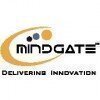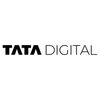Filter interviews by
DataMetica Interview Questions and Answers
42 Interview questions
Bigquery architecture is a distributed, serverless, highly scalable, and cost-effective data warehouse designed for large-scale data analytics.
Bigquery uses a distributed architecture to store and query data across multiple servers for high performance.
It is serverless, meaning users do not need to manage any infrastructure and can focus on analyzing data.
Bigquery is highly scalable, allowing users to easily scale...
Data ingestion is the process of collecting, importing, and processing data from various sources into a storage system.
Data ingestion involves extracting data from different sources such as databases, APIs, files, and streaming platforms.
The extracted data is then transformed and loaded into a data warehouse, data lake, or other storage systems for analysis.
Common tools used for data ingestion include Apache Kafka...
SQL joins combine rows from two or more tables based on related columns, enabling complex queries and data analysis.
INNER JOIN: Returns records with matching values in both tables. Example: SELECT * FROM A INNER JOIN B ON A.id = B.id;
LEFT JOIN: Returns all records from the left table and matched records from the right table. Example: SELECT * FROM A LEFT JOIN B ON A.id = B.id;
RIGHT JOIN: Returns all records from t...
Datastage is an ETL tool used for extracting, transforming, and loading data from various sources to a target destination.
Datastage is part of the IBM Information Server suite.
It provides a graphical interface to design and run data integration jobs.
Datastage supports parallel processing for high performance.
It can connect to a variety of data sources such as databases, flat files, and web services.
Datastage jobs ...
Informatica is a data integration tool used for ETL (Extract, Transform, Load) processes in data engineering.
Informatica is used for extracting data from various sources like databases, flat files, etc.
It can transform the data according to business rules and load it into a target data warehouse or database.
Informatica provides a visual interface for designing ETL workflows and monitoring data integration processe...
A freestyle project is a type of project in Jenkins that allows users to configure the build process in any way they want. A pipeline is a set of automated steps that define the process for building, testing, and deploying code.
Freestyle project in Jenkins allows users to configure build process manually
Pipeline in Jenkins is a set of automated steps for building, testing, and deploying code
Freestyle projects are ...
VPC peering allows connecting two VPCs to communicate using private IP addresses.
VPC peering enables instances in different VPCs to communicate as if they are within the same network.
Traffic between peered VPCs stays within the private IP space and does not traverse the internet.
VPC peering does not involve a gateway, VPN, or direct connection.
Both VPCs must have non-overlapping IP ranges for successful peering.
Ex...
CICD stands for Continuous Integration and Continuous Deployment. It is a software development practice where code changes are automatically built, tested, and deployed.
Automates the process of integrating code changes into a shared repository
Automatically builds and tests the code to ensure it is functional
Automatically deploys the code to production or staging environments
Helps in detecting and fixing integratio...
Docker Swarm is used for orchestrating multiple Docker containers across multiple hosts, while Docker Compose is used for defining and running multi-container Docker applications.
Docker Swarm is a container orchestration tool that allows you to manage a cluster of Docker hosts.
Docker Compose is a tool for defining and running multi-container Docker applications.
Docker Swarm is used for scaling and managing a clust...
VPC stands for Virtual Private Cloud, a virtual network dedicated to a single organization's resources in the cloud.
Allows organizations to have control over their virtual network environment
Enables customization of network configuration
Provides security by allowing isolation of resources
Can connect to on-premises data centers or other VPCs using VPN or Direct Connect
DataMetica Interview Experiences
45 interviews found
I applied via LinkedIn and was interviewed in Sep 2024. There were 3 interview rounds.
(5 Questions)
- Q1. What is CICD ?
- Ans.
CICD stands for Continuous Integration and Continuous Deployment. It is a software development practice where code changes are automatically built, tested, and deployed.
Automates the process of integrating code changes into a shared repository
Automatically builds and tests the code to ensure it is functional
Automatically deploys the code to production or staging environments
Helps in detecting and fixing integration err...
- Q2. How to create image out of running container ?
- Ans.
To create an image out of a running container, you can use the 'docker commit' command.
Use 'docker commit' command to create an image from a running container
Syntax: docker commit [OPTIONS] CONTAINER [REPOSITORY[:TAG]]
Example: docker commit container_id repository_name:tag
- Q3. What is the difference between docker add and copy command?
- Ans.
Docker add command can fetch a file from a URL and add it to the image, while copy command copies files from the host machine to the image.
Docker add command can fetch files from URLs and add them to the image
Copy command copies files from the host machine to the image
Add command can also automatically extract compressed files during the build process
Copy command is more commonly used for copying local files
- Q4. What is freestyle project and pipeline ?
- Ans.
A freestyle project is a type of project in Jenkins that allows users to configure the build process in any way they want. A pipeline is a set of automated steps that define the process for building, testing, and deploying code.
Freestyle project in Jenkins allows users to configure build process manually
Pipeline in Jenkins is a set of automated steps for building, testing, and deploying code
Freestyle projects are more ...
- Q5. What is the difference between docker swarm and docker compose ?
- Ans.
Docker Swarm is used for orchestrating multiple Docker containers across multiple hosts, while Docker Compose is used for defining and running multi-container Docker applications.
Docker Swarm is a container orchestration tool that allows you to manage a cluster of Docker hosts.
Docker Compose is a tool for defining and running multi-container Docker applications.
Docker Swarm is used for scaling and managing a cluster of...
(5 Questions)
- Q1. What is the project you worked can you plz explain?
- Q2. What is VPC ?
- Ans.
VPC stands for Virtual Private Cloud, a virtual network dedicated to a single organization's resources in the cloud.
Allows organizations to have control over their virtual network environment
Enables customization of network configuration
Provides security by allowing isolation of resources
Can connect to on-premises data centers or other VPCs using VPN or Direct Connect
- Q3. What is CICD pipeline and its stages ?
- Ans.
CICD pipeline is a process that automates the building, testing, and deployment of software.
Continuous Integration (CI) - code changes are integrated into a shared repository multiple times a day.
Continuous Testing - automated tests are run to ensure code quality.
Continuous Deployment - code changes are automatically deployed to production.
Stages include: build, test, deploy, and monitor.
Tools like Jenkins, GitLab, and...
- Q4. VPC peering concept ?
- Ans.
VPC peering allows connecting two VPCs to communicate using private IP addresses.
VPC peering enables instances in different VPCs to communicate as if they are within the same network.
Traffic between peered VPCs stays within the private IP space and does not traverse the internet.
VPC peering does not involve a gateway, VPN, or direct connection.
Both VPCs must have non-overlapping IP ranges for successful peering.
Example...
- Q5. Whole concept of VPC , subnet and route table and NAT gateway ?
- Ans.
VPC is a virtual private cloud that allows you to create isolated networks within the cloud environment. Subnets are subdivisions of a VPC, route tables define how traffic is directed within the VPC, and NAT gateway allows instances in a private subnet to access the internet.
VPC is a virtual private cloud that provides a logically isolated section of the AWS Cloud where you can launch resources.
Subnets are subdivisions...
(1 Question)
- Q1. Basics Quesestions?
Interview Preparation Tips
Skills evaluated in this interview
SQL NORMAL QUESTIONS
(1 Question)
- Q1. PYTHON QUESTIONS
(1 Question)
- Q1. GCP INTERVIEW QUESTIONS
(1 Question)
- Q1. DISCUSSION ROUND
I applied via Company Website and was interviewed in Jul 2024. There were 2 interview rounds.
Apitude test with coding test two sql questions,
(6 Questions)
- Q1. What is ETL, Layers of ETL, Do you know any ETL automation tool
- Ans.
ETL stands for Extract, Transform, Load. It is a process used to extract data from various sources, transform it into a consistent format, and load it into a target database.
ETL involves three main layers: Extraction, Transformation, and Loading.
Extraction: Data is extracted from various sources such as databases, files, APIs, etc.
Transformation: Data is cleaned, validated, and transformed into a consistent format.
Load...
- Q2. Python star pattern 1 12 123, Differnce between List and Dictionary
- Ans.
Python star pattern 1 12 123 is a pattern printing question. List and Dictionary are data structures in Python.
Python star pattern 1 12 123 can be achieved using nested loops.
Lists are ordered collections of items, accessed by index. Dictionaries are key-value pairs, accessed by key.
Example: List - [1, 2, 3], Dictionary - {'a': 1, 'b': 2, 'c': 3}
- Q3. 10-12 Queries based on joins, max function etc, difference between rank, dense rank, row_number and its syntax, how to combine two columns without concat function. What is Alias. What is the use of partiti...
- Q4. Do you know GCP? Do you know bigquery?
- Ans.
Yes, I am familiar with Google Cloud Platform (GCP) and BigQuery.
I have experience working with GCP services such as Compute Engine, Cloud Storage, and BigQuery.
I have used BigQuery for analyzing large datasets and running complex queries.
I am familiar with setting up data pipelines and ETL processes using GCP services.
- Q5. Q based on resume Shell scripting commands what is -x what is chmod 757 on owner group and others
- Q6. What is SDLC, STLC
- Ans.
SDLC stands for Software Development Life Cycle and STLC stands for Software Testing Life Cycle.
SDLC is a process used by software development teams to design, develop, and test high-quality software.
STLC is a subset of SDLC focused specifically on the testing phase of the software development process.
SDLC includes phases like planning, analysis, design, implementation, and maintenance.
STLC includes phases like test pl...
Interview Preparation Tips
- SQL
- Python
- Testing
- Cloud
Skills evaluated in this interview
I applied via Naukri.com and was interviewed in Jul 2024. There were 2 interview rounds.
(2 Questions)
- Q1. How to find duplicate entries in a table using SQL
- Ans.
Use SQL query with GROUP BY and HAVING clause to find duplicate entries in a table.
Use GROUP BY clause to group the rows based on the columns that you suspect may have duplicates.
Use COUNT() function to count the number of occurrences of each group.
Use HAVING clause to filter out groups that have more than one occurrence, indicating duplicates.
Example: SELECT column1, column2, COUNT(*) FROM table_name GROUP BY column1,...
- Q2. How to find 3 highest salary in a Employee table without using limit or offset function
- Ans.
Use subquery to find 3 highest salaries in Employee table without using limit or offset function
Use subquery to select distinct salaries from Employee table
Order the distinct salaries in descending order
Select top 3 salaries from the ordered list
(2 Questions)
- Q1. Python dictionary
- Q2. Python code solution asked in online test
Interview Preparation Tips
Skills evaluated in this interview
(2 Questions)
- Q1. What is Informatica tool
- Ans.
Informatica is a data integration tool used for ETL (Extract, Transform, Load) processes in data engineering.
Informatica is used for extracting data from various sources like databases, flat files, etc.
It can transform the data according to business rules and load it into a target data warehouse or database.
Informatica provides a visual interface for designing ETL workflows and monitoring data integration processes.
It ...
- Q2. What is Datastage tool
- Ans.
Datastage is an ETL tool used for extracting, transforming, and loading data from various sources to a target destination.
Datastage is part of the IBM Information Server suite.
It provides a graphical interface to design and run data integration jobs.
Datastage supports parallel processing for high performance.
It can connect to a variety of data sources such as databases, flat files, and web services.
Datastage jobs can b...
Skills evaluated in this interview
I applied via Approached by Company and was interviewed in Sep 2024. There was 1 interview round.
(1 Question)
- Q1. Sql joins,dense rank and rank,window function
Interview Preparation Tips
I applied via Naukri.com and was interviewed in Aug 2024. There was 1 interview round.
(2 Questions)
- Q1. What is the difference between Informatica Powercentre and iics
- Ans.
Informatica Powercentre is an on-premise ETL tool, while iics is a cloud-based ETL tool.
Informatica Powercentre is an on-premise ETL tool, meaning it is installed and run on the user's own hardware and infrastructure.
iics (Informatica Intelligent Cloud Services) is a cloud-based ETL tool, allowing users to access and use the tool via the internet.
Informatica Powercentre requires manual upgrades and maintenance, while i...
- Q2. How can you optimize session
- Ans.
Optimizing session involves tuning session settings, utilizing efficient data loading techniques, and minimizing resource usage.
Tune session settings such as buffer size, commit interval, and block size for optimal performance
Utilize efficient data loading techniques like bulk loading, incremental loading, and parallel processing
Minimize resource usage by optimizing SQL queries, reducing unnecessary transformations, an...
Skills evaluated in this interview
I applied via Naukri.com and was interviewed in Jul 2024. There was 1 interview round.
(2 Questions)
- Q1. About you and your work
- Q2. Any thing special you did
Interview Preparation Tips
(2 Questions)
- Q1. What is RBAC in Kubernetes ?
- Ans.
RBAC in Kubernetes stands for Role-Based Access Control, which is used to control access to resources based on roles assigned to users.
RBAC allows administrators to define roles with specific permissions for accessing resources in a Kubernetes cluster.
Roles can be assigned to users or groups, allowing fine-grained control over who can perform certain actions.
RBAC includes four primary components: Role, RoleBinding, Clu...
- Q2. What are security features in gcp ?
- Ans.
Google Cloud Platform (GCP) offers various security features to protect data and resources.
Identity and Access Management (IAM) for controlling access to resources
Encryption at rest and in transit to protect data
Network security with Virtual Private Cloud (VPC) and firewall rules
Security Key Enforcement for two-factor authentication
Security Scanner for vulnerability assessment
Cloud Security Command Center for centraliz...
Skills evaluated in this interview
I applied via Naukri.com and was interviewed in Mar 2024. There was 1 interview round.
(2 Questions)
- Q1. What is fact and dimensions
- Ans.
Facts and dimensions are key concepts in data warehousing. Facts are numerical data that can be measured, while dimensions are descriptive attributes related to the facts.
Facts are quantitative data that can be aggregated, such as sales revenue or quantity sold.
Dimensions are descriptive attributes that provide context to the facts, such as product category, customer name, or date.
Facts are typically stored in fact tab...
- Q2. ETL and Datawarehouse questions
Top trending discussions






DataMetica Interview FAQs
The duration of DataMetica interview process can vary, but typically it takes about less than 2 weeks to complete.
Tell us how to improve this page.
DataMetica Interviews By Designations
- DataMetica Data Engineer Interview Questions
- DataMetica Engineer 1 Interview Questions
- DataMetica Software Developer Interview Questions
- DataMetica Java Developer Interview Questions
- DataMetica ETL Tester Interview Questions
- DataMetica Technical Lead Interview Questions
- DataMetica Software Engineer Interview Questions
- DataMetica Data Analyst Interview Questions
- Show more
Interview Questions for Popular Designations
- Data Engineer Interview Questions
- Executive Interview Questions
- Senior Executive Interview Questions
- Analyst Interview Questions
- Software Engineer Interview Questions
- Senior Associate Interview Questions
- Business Analyst Interview Questions
- Graduate Engineer Trainee (Get) Interview Questions
- Show more
Overall Interview Experience Rating
based on 48 interview experiences
Difficulty level
Duration
Interview Questions from Similar Companies
DataMetica Reviews and Ratings
based on 378 reviews
Rating in categories
|
Data Engineer
201
salaries
| ₹4.5 L/yr - ₹10.6 L/yr |
|
Engineer 1
174
salaries
| ₹4 L/yr - ₹8.6 L/yr |
|
L2 Engineer
144
salaries
| ₹6.2 L/yr - ₹13.7 L/yr |
|
Technical Lead
101
salaries
| ₹20.3 L/yr - ₹35 L/yr |
|
Associate Engineer
98
salaries
| ₹2.7 L/yr - ₹6 L/yr |

Tekwissen

Softenger

XcelServ Solutions

Capital Numbers Infotech
- Home >
- Interviews >
- DataMetica Interview Questions
















